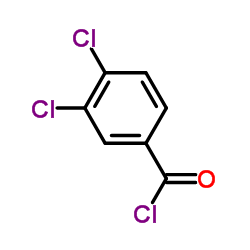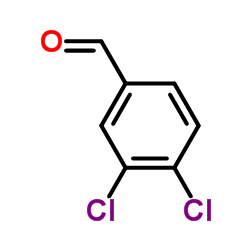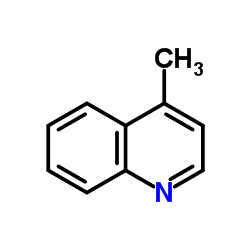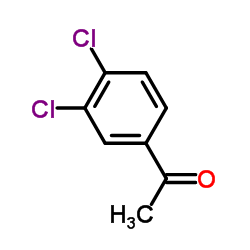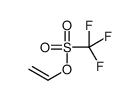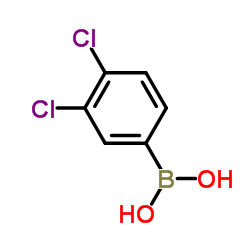2039-83-0
| Name | 1,2-dichloro-4-ethenylbenzene |
|---|---|
| Synonyms |
1,2-Dichloro-4-vinylbenzene
Benzene, 1,2-dichloro-4-ethenyl- 3,4-dichlorophenylethylene 1,2-dichloro-4-ethenyl-benzene 3,4-Dichlor-styrol Benzene,1,2-dichloro-4-ethenyl EINECS 218-023-1 3,4-dichlorostyrene |
| Density | 1.2±0.1 g/cm3 |
|---|---|
| Boiling Point | 238.9±28.0 °C at 760 mmHg |
| Molecular Formula | C8H6Cl2 |
| Molecular Weight | 173.039 |
| Flash Point | 101.7±17.5 °C |
| Exact Mass | 171.984650 |
| LogP | 3.70 |
| Vapour Pressure | 0.1±0.5 mmHg at 25°C |
| Index of Refraction | 1.589 |
| Storage condition | 2-8°C |
Synonym: Section 2 - COMPOSITION, INFORMATION ON INGREDIENTS
Risk Phrases: None Listed. Section 3 - HAZARDS IDENTIFICATION EMERGENCY OVERVIEW
Not available. Potential Health Effects Eye: May cause eye irritation. Skin: May cause skin irritation. May be harmful if absorbed through the skin. Ingestion: May cause irritation of the digestive tract. May be harmful if swallowed. Inhalation: May cause respiratory tract irritation. May be harmful if inhaled. Chronic: Not available. Section 4 - FIRST AID MEASURES Eyes: Flush eyes with plenty of water for at least 15 minutes, occasionally lifting the upper and lower eyelids. Get medical aid. Skin: Get medical aid. Flush skin with plenty of water for at least 15 minutes while removing contaminated clothing and shoes. Ingestion: Get medical aid. Wash mouth out with water. Inhalation: Remove from exposure and move to fresh air immediately. Notes to Physician: Treat symptomatically and supportively. Section 5 - FIRE FIGHTING MEASURES General Information: As in any fire, wear a self-contained breathing apparatus in pressure-demand, MSHA/NIOSH (approved or equivalent), and full protective gear. Combustible liquid. Extinguishing Media: Use water spray, dry chemical, carbon dioxide, or chemical foam. Section 6 - ACCIDENTAL RELEASE MEASURES General Information: Use proper personal protective equipment as indicated in Section 8. Spills/Leaks: Absorb spill with inert material (e.g. vermiculite, sand or earth), then place in suitable container. Section 7 - HANDLING and STORAGE Handling: Avoid breathing dust, vapor, mist, or gas. Avoid contact with skin and eyes. Storage: Keep away from sources of ignition. Store in a cool, dry place. Store in a tightly closed container. Section 8 - EXPOSURE CONTROLS, PERSONAL PROTECTION Engineering Controls: Use adequate ventilation to keep airborne concentrations low. Exposure Limits CAS# 2039-83-0: Personal Protective Equipment Eyes: Not available. Skin: Wear appropriate protective gloves to prevent skin exposure. Clothing: Wear appropriate protective clothing to prevent skin exposure. Respirators: Follow the OSHA respirator regulations found in 29 CFR 1910.134 or European Standard EN 149. Use a NIOSH/MSHA or European Standard EN 149 approved respirator if exposure limits are exceeded or if irritation or other symptoms are experienced. Section 9 - PHYSICAL AND CHEMICAL PROPERTIES Physical State: Clear liquid Color: colorless to yellow Odor: Not available. pH: Not available. Vapor Pressure: Not available. Viscosity: Not available. Boiling Point: 68 - 70 deg C @1mmHg Freezing/Melting Point: Not available. Autoignition Temperature: Not available. Flash Point: 71 deg C ( 159.80 deg F) Explosion Limits, lower: Not available. Explosion Limits, upper: Not available. Decomposition Temperature: Solubility in water: Specific Gravity/Density: Molecular Formula: C8H6Cl2 Molecular Weight: 173.04 Section 10 - STABILITY AND REACTIVITY Chemical Stability: Not available. Conditions to Avoid: Incompatible materials, light. Incompatibilities with Other Materials: Strong oxidizing agents, bases, acids, halogens. Hazardous Decomposition Products: Hydrogen chloride, carbon monoxide, carbon dioxide. Hazardous Polymerization: Has not been reported Section 11 - TOXICOLOGICAL INFORMATION RTECS#: CAS# 2039-83-0 unlisted. LD50/LC50: Not available. Carcinogenicity: 3,4-Dichlorostyrene - Not listed by ACGIH, IARC, or NTP. Section 12 - ECOLOGICAL INFORMATION Section 13 - DISPOSAL CONSIDERATIONS Dispose of in a manner consistent with federal, state, and local regulations. Section 14 - TRANSPORT INFORMATION IATA Not regulated as a hazardous material. IMO Not regulated as a hazardous material. RID/ADR Not regulated as a hazardous material. Section 15 - REGULATORY INFORMATION European/International Regulations European Labeling in Accordance with EC Directives Hazard Symbols: Not available. Risk Phrases: Safety Phrases: S 24/25 Avoid contact with skin and eyes. WGK (Water Danger/Protection) CAS# 2039-83-0: No information available. Canada None of the chemicals in this product are listed on the DSL/NDSL list. CAS# 2039-83-0 is not listed on Canada's Ingredient Disclosure List. US FEDERAL TSCA CAS# 2039-83-0 is not listed on the TSCA inventory. It is for research and development use only. SECTION 16 - ADDITIONAL INFORMATION N/A |
| Hazard Codes | Xi |
|---|---|
| HS Code | 2903999090 |
|
~66% 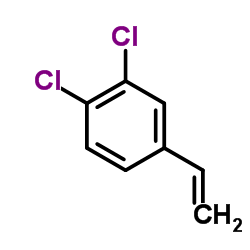
2039-83-0 |
| Literature: Efange, Simon M. N.; Kamath, Ashok P.; Khare, Anil B.; Kung, Mei-Ping; Mach, Robert H.; Parsons, Stanley M. Journal of Medicinal Chemistry, 1997 , vol. 40, # 24 p. 3905 - 3914 |
|
~18% 
2039-83-0 |
| Literature: Spencer, Alwyn Journal of Organometallic Chemistry, 1983 , vol. 247, # 1 p. 117 - 122 |
|
~% 
2039-83-0 |
| Literature: Walling; Wolfstirn Journal of the American Chemical Society, 1947 , vol. 69, p. 852 |
|
~% 
2039-83-0 |
| Literature: Walling; Wolfstirn Journal of the American Chemical Society, 1947 , vol. 69, p. 852 Full Text View citing articles Show Details Sprague Electric Co. Patent: US2406319 , 1943 ; |
|
~% 
2039-83-0 |
| Literature: Efange, Simon M. N.; Kamath, Ashok P.; Khare, Anil B.; Kung, Mei-Ping; Mach, Robert H.; Parsons, Stanley M. Journal of Medicinal Chemistry, 1997 , vol. 40, # 24 p. 3905 - 3914 |
|
~% 
2039-83-0 |
| Literature: Shimizu, Nobujiro; Watanabe, Shin-ichiro; Tsuno, Yuho Bulletin of the Chemical Society of Japan, 1991 , vol. 64, # 7 p. 2249 - 2254 |
|
~% 
2039-83-0 |
| Literature: Shimizu, Nobujiro; Watanabe, Shin-ichiro; Tsuno, Yuho Bulletin of the Chemical Society of Japan, 1991 , vol. 64, # 7 p. 2249 - 2254 |
|
~% 
2039-83-0 |
| Literature: Kedia, Sandeep B.; Mitchell, Mark B. Organic Process Research and Development, 2009 , vol. 13, # 3 p. 420 - 428 |
|
~% 
2039-83-0 |
| Literature: Shimizu, Nobujiro; Watanabe, Shin-ichiro; Tsuno, Yuho Bulletin of the Chemical Society of Japan, 1991 , vol. 64, # 7 p. 2249 - 2254 |
| HS Code | 2903999090 |
|---|---|
| Summary | 2903999090 halogenated derivatives of aromatic hydrocarbons VAT:17.0% Tax rebate rate:9.0% Supervision conditions:none MFN tariff:5.5% General tariff:30.0% |



